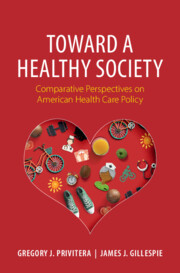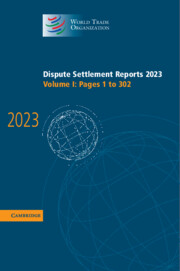Refine search
Actions for selected content:
3380388 results
Can Status Competition Save the World? Grafting, Green Energy, and the Climate Crisis
-
- Journal:
- International Organization , First View
- Published online by Cambridge University Press:
- 05 September 2025, pp. 1-36
-
- Article
-
- You have access
- Open access
- HTML
- Export citation
Theology as social knowledge
-
- Journal:
- Religious Studies , First View
- Published online by Cambridge University Press:
- 05 September 2025, pp. 1-18
-
- Article
-
- You have access
- Open access
- HTML
- Export citation
The economic burden of complex CHD in the United States
-
- Journal:
- Cardiology in the Young , First View
- Published online by Cambridge University Press:
- 05 September 2025, pp. 1-8
-
- Article
-
- You have access
- Open access
- HTML
- Export citation
Meta-analysis of public RNA-sequencing data of drought and salt stresses in different phenotypes of resistant and susceptible Oryza sativa cultivars
-
- Journal:
- Quantitative Plant Biology / Volume 6 / 2025
- Published online by Cambridge University Press:
- 05 September 2025, e27
-
- Article
-
- You have access
- Open access
- HTML
- Export citation
Education intervention for the elderly preparing for end-of-life
-
- Journal:
- Palliative & Supportive Care / Volume 23 / 2025
- Published online by Cambridge University Press:
- 05 September 2025, e155
-
- Article
-
- You have access
- Open access
- HTML
- Export citation
Taxonomic utility of isolated ankylosaurian dinosaur teeth using traditional and geometric morphometrics with implications for ankylosaur paleoecology
-
- Journal:
- Journal of Paleontology , First View
- Published online by Cambridge University Press:
- 05 September 2025, pp. 1-17
-
- Article
-
- You have access
- Open access
- HTML
- Export citation
WATER WAVE SCATTERING BY
 $\large \boldsymbol {\sqcap }$-SHAPED AND INVERTED
$\large \boldsymbol {\sqcap }$-SHAPED AND INVERTED  $\large \boldsymbol {\sqcap }$-SHAPED POROUS BREAKWATERS
$\large \boldsymbol {\sqcap }$-SHAPED POROUS BREAKWATERS
-
- Journal:
- The ANZIAM Journal / Volume 67 / 2025
- Published online by Cambridge University Press:
- 05 September 2025, e31
-
- Article
- Export citation
Attitudes of psychiatric staff toward coercion: nationwide AttCo study
-
- Journal:
- BJPsych Open / Volume 11 / Issue 5 / September 2025
- Published online by Cambridge University Press:
- 05 September 2025, e195
-
- Article
-
- You have access
- Open access
- HTML
- Export citation
Faith in Medicine: Christianity’s Legacy of Medical Charity: Presidential Address ASCH 2025 Chicago
-
- Journal:
- Church History , First View
- Published online by Cambridge University Press:
- 05 September 2025, pp. 1-10
-
- Article
- Export citation

Toward a Healthy Society
- Comparative Perspectives on American Health Care Policy
- Coming soon
-
- Expected online publication date:
- September 2025
- Print publication:
- 25 September 2025
-
- Book
- Export citation
Caring for carers of people with advanced cancer at hospital discharge (CARENET): A single-arm open label feasibility trial
-
- Journal:
- Palliative & Supportive Care / Volume 23 / 2025
- Published online by Cambridge University Press:
- 05 September 2025, e156
-
- Article
-
- You have access
- Open access
- HTML
- Export citation
Intergenerational Justice, The Sixth Mass Extinction, Reproduction and Advanced Biotechnologies, and Humanity’s Future
-
- Journal:
- Cambridge Prisms: Extinction / Accepted manuscript
- Published online by Cambridge University Press:
- 05 September 2025, pp. 1-31
-
- Article
-
- You have access
- Open access
- Export citation

Dispute Settlement Reports 2023
- Coming soon
-
- Expected online publication date:
- September 2025
- Print publication:
- 25 September 2025
-
- Book
- Export citation
Ethnic disparities, clinical and pathways to care characteristics associated with the offer, uptake, and type of psychological therapy during first-episode psychosis: examining the role of early intervention for psychosis
-
- Journal:
- Psychological Medicine / Volume 55 / 2025
- Published online by Cambridge University Press:
- 05 September 2025, e262
-
- Article
-
- You have access
- Open access
- HTML
- Export citation
Sternal opening width is associated with increased risk for capillary leak syndrome and death in neonates and infants after cardiac surgery with delayed sternal closure
-
- Journal:
- Cardiology in the Young , First View
- Published online by Cambridge University Press:
- 05 September 2025, pp. 1-7
-
- Article
-
- You have access
- Open access
- HTML
- Export citation
Human babesiosis: The past, present and future
-
- Journal:
- Expert Reviews in Molecular Medicine / Volume 27 / 2025
- Published online by Cambridge University Press:
- 05 September 2025, e30
-
- Article
-
- You have access
- Open access
- HTML
- Export citation
Beyond grief: Quantifying bereavement needs of rural family caregivers
-
- Journal:
- Palliative & Supportive Care / Volume 23 / 2025
- Published online by Cambridge University Press:
- 05 September 2025, e157
-
- Article
-
- You have access
- Open access
- HTML
- Export citation
A new paradigm for computing hydrodynamic forces on particles in Euler–Lagrange point-particle simulations
-
- Journal:
- Journal of Fluid Mechanics / Volume 1018 / 10 September 2025
- Published online by Cambridge University Press:
- 05 September 2025, A41
-
- Article
-
- You have access
- Open access
- HTML
- Export citation
A fully nonlinear solution of the flow around a spinning spheroid in a rotating stratified fluid
-
- Journal:
- Journal of Fluid Mechanics / Volume 1018 / 10 September 2025
- Published online by Cambridge University Press:
- 05 September 2025, A44
-
- Article
-
- You have access
- Open access
- HTML
- Export citation
A uniform current passing bodies submerged beneath an ice sheet at critical Froude numbers
-
- Journal:
- Journal of Fluid Mechanics / Volume 1018 / 10 September 2025
- Published online by Cambridge University Press:
- 05 September 2025, A45
-
- Article
-
- You have access
- Open access
- HTML
- Export citation







